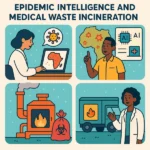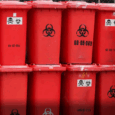Epidemic Intelligence and Medical Waste Incineration: Building a Safer Future
Introduction
Global health security depends on two parallel systems: epidemic intelligence platforms and medical waste treatment infrastructure. Companies like Metabiota and other epidemic-surveillance organizations provide data-driven insights into outbreaks, while incinerator manufacturers such as HICLOVER deliver practical solutions for hospital waste management. Together, these fields create a complementary strategy for pandemic preparedness and response.
Companies Similar to Metabiota and Their Roles
-
BlueDot (Canada): Specializes in AI-driven epidemic forecasting, monitoring disease spread across travel and population data.
-
HealthMap (U.S.): Aggregates global health reports, social media, and official data for outbreak alerts.
-
Ginkgo Bioworks (U.S.): Expands on biosecurity and pathogen monitoring, partly through assets acquired from Metabiota.
These companies highlight the increasing role of data analytics, AI, and biosurveillance in predicting outbreaks before they become uncontrollable.
Why Medical Waste Incineration Aligns with Epidemic Surveillance
While epidemic-intelligence firms identify risk zones, incinerators ensure biomedical waste does not become a secondary source of infection:
-
Containment of contaminated materials: PPE, syringes, and laboratory waste can be rapidly neutralized.
-
On-site deployment: Containerized or skid-mounted incinerators are suitable for field hospitals, refugee camps, and military health facilities.
-
Compliance with WHO standards: Dual-chamber combustion and >1100 °C retention times guarantee safe disposal.
-
Scalability: From small 30 kg/h units for clinics to 500 kg/h systems for large hospitals.
This creates a direct operational synergy: surveillance detects threats, while incineration mitigates waste-related risks.
Future Trends in Epidemic Surveillance and Waste Management
-
AI-driven outbreak alerts linked with logistics
Data models could trigger automated deployment of incinerator units to outbreak regions. -
Integration with telemedicine and mobile hospitals
As mobile clinics expand, lightweight containerized incinerators will be standard additions. -
Sustainability and ESG compliance
Hospitals and NGOs will prefer incinerators with fuel-saving PLC controls and optional heat recovery systems. -
Public-private partnerships
Governments may procure epidemic monitoring software together with medical waste disposal infrastructure, bundling intelligence and equipment in one resilience package.
HICLOVER’s Position in This Framework
-
Field-proven incinerators operating in Africa, Asia, and the Middle East.
-
Flexible fuel options (diesel, LPG, natural gas) adapted to resource-limited environments.
-
Customizable designs (containerized, trailer-mounted, or skid-based) for emergency deployment.
-
Global presence, supplying to UN agencies, WHO projects, and ministries of health.
-
epidemic surveillance and medical waste incinerators
-
outbreak preparedness hospital waste solutions
-
dual-chamber incinerator for infectious disease control
-
AI-driven epidemic intelligence and waste management
-
HICLOVER medical waste incinerator Africa projects
-
pandemic waste disposal equipment
-
containerized incinerator for field hospitals
Conclusion
Future epidemic preparedness requires integration of intelligence and infrastructure. Companies like Metabiota provide the data, while HICLOVER delivers the physical waste-disposal solutions. As outbreaks become more frequent and globalized, pairing epidemic monitoring with scalable incineration technology will be critical to protect healthcare systems, communities, and frontline workers.





